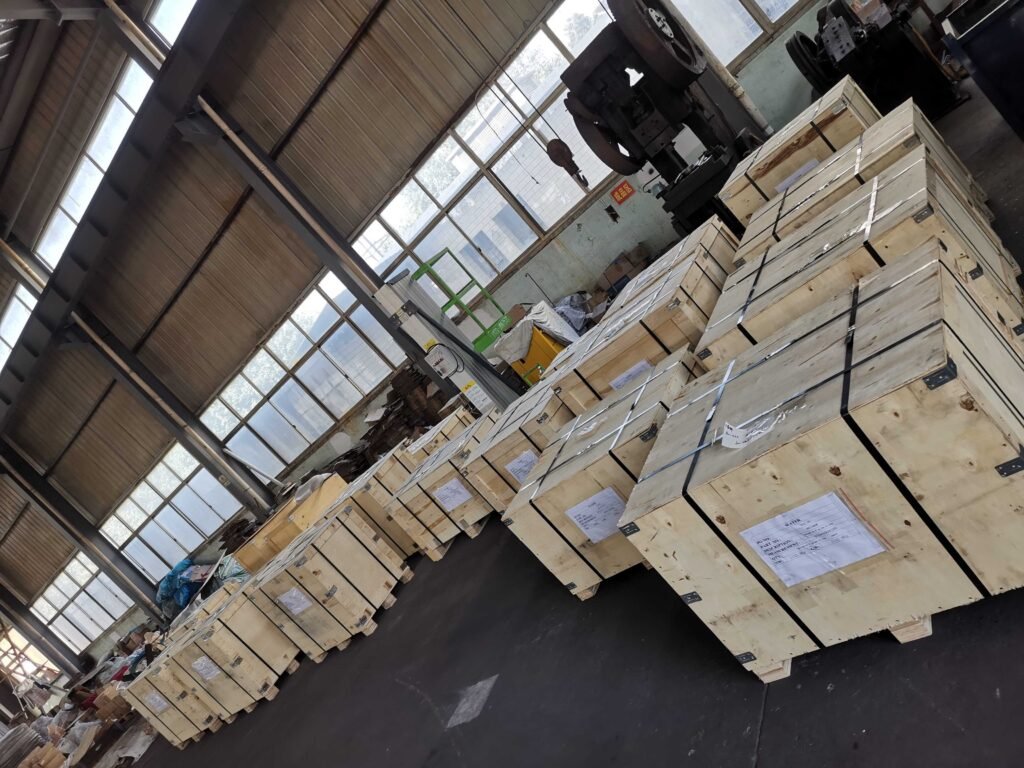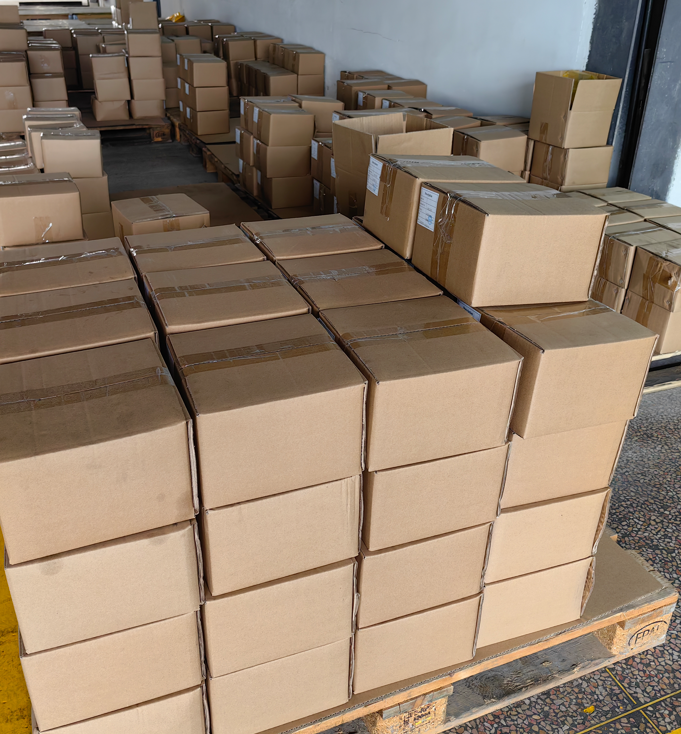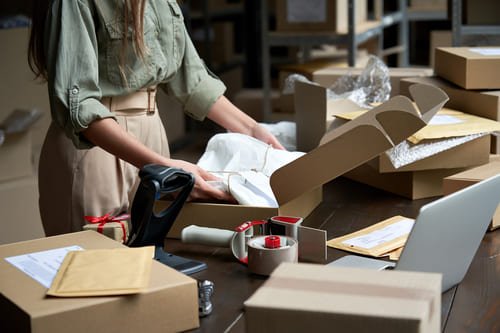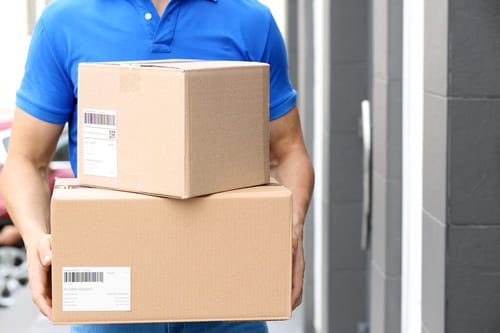Fastener shipments seem small—but without the right protection, they can arrive damaged, scattered, or even rusted.
To prevent damage during international shipping, use strong packaging, moisture protection, secure labeling, and work with reliable freight forwarders who understand industrial goods.

I've shipped thousands of fasteners to Europe and North America. They may be small parts, but the risk is big. Damage during shipping isn’t just about broken parts—it’s about hurting trust, slowing down production, and losing money. Whether it's bolts, nuts, or custom screws, if they don't arrive in perfect condition, clients like Oliver in Germany won’t be happy. Here’s how I avoid that risk with every order.
How to protect packages from damage?
No matter how strong the product is, weak packaging makes it vulnerable. Packages need to survive rough handling, stacking, and bad weather.
To protect packages, use double-wall boxes, inner cushioning, weatherproofing, and tamper-proof sealing. Never rely on just the outer carton.

I’ve seen fastener boxes split open in customs just because the straps weren’t tight enough. Since then, I’ve built a checklist for every shipment. It starts with box strength and ends with final inspection. Even the strongest bolts are no good if they scatter on the port floor.
Packaging Checklist for Fasteners
| Protection Step | Reason | What I Use |
|---|---|---|
| Double-wall cartons | Prevents box crushing under weight | 5-ply corrugated boxes |
| Internal plastic bags | Prevents surface damage and mix-ups | Transparent PE bags with labels |
| Moisture barrier film | Protects against humidity during ocean travel | Vacuum-packed or VCI plastic when needed |
| Pallet stretch wrapping | Holds boxes together during transit | Shrink film and corner guards |
When packaging precision fasteners, I also separate each item type and label them clearly. This avoids mix-ups at the client’s warehouse, and speeds up their inspection process. Oliver once told me his staff spent an entire morning sorting parts from a previous supplier—that should never happen.
How do you ship products and minimize transportation risks to products?
Choosing the wrong shipping method can undo all the care taken in packaging. So I match the logistics plan with the cargo type and delivery urgency.
To reduce transportation risks, choose the right shipping method, secure cargo in containers or on pallets, and insure the shipment against loss or damage.

When I ship to Germany, I usually prefer sea freight for large orders—it’s cost-effective, and fasteners aren't urgent most of the time. But even in containers, cargo needs to be packed to resist tilt, humidity, and pressure. One of our pallets once tipped in transit because the base wasn’t reinforced enough. Since then, I always check pallet specs and box stacking weight.
Shipping Risk Reduction Methods
| Shipping Risk | Prevention Method | What I Do |
|---|---|---|
| Rough handling | Use shock-absorbing fillers and strapping | Foam pads inside boxes, strong straps on pallet |
| Moisture damage | Desiccants and sealed film | Add silica gel inside each bulk pack |
| Stacking pressure | Use edge protectors and limit stack height | Keep stack below 1.2m unless on wood crates |
| Lost or delayed cargo | Use tracking and freight insurance | Work with insured, reliable forwarders |
Freight isn't just about moving products. It's part of the client experience. A delayed or damaged shipment means Oliver misses a deadline with his customers. I’d rather spend a bit more on packaging and secure loading than face a complaint or lost order.
What to do if an item is damaged during shipping?
Even with good planning, accidents can happen. So it's important to have a clear process to respond quickly and fairly.
If an item is damaged during shipping, document the issue with photos, notify the supplier and carrier immediately, and file a claim if insured.

One time, a crate of custom screws arrived in Spain with a corner crushed in. The client sent me pictures within an hour. Because we had insurance and kept shipping records, we got the claim settled fast. The key is not to delay and to keep proof ready.
Damage Response Plan
| Step | Why It’s Critical | What I Tell My Clients |
|---|---|---|
| Take clear photos | Shows condition at arrival | Include close-ups and labels |
| Contact the forwarder | Starts the claim and investigation | Provide shipping number and damage details |
| Notify the supplier | Allows fast replacement or credit decision | I always respond within 1 working day |
| File insurance claim | Recovers the cost of damaged goods | Done within 5–7 days after documentation |
To make things smoother, I include “If Damaged” stickers and receiver instructions on the pallet. That way, even warehouse staff know to check and report issues right away. It’s better to catch damage on day one than fight about it weeks later.
How do you protect fragile packages?
Some fasteners—like those with coatings, or precision-machined threads—can be as fragile as glass when packed poorly.
To protect fragile packages, use foam inserts, dividers, custom molds, and avoid excess space inside boxes that allows movement.

For parts with surface treatments or threads that must stay clean, I don’t treat them like regular bolts. I separate them into foam-lined compartments, and sometimes we even 3D print holders. One time we shipped plated screws to a client in Canada. Just a small rub between parts caused visible scratches. Since then, we handle those like medical devices.
Methods to Ship Fragile Fasteners
| Fragility Cause | Packaging Solution | My Application Example |
|---|---|---|
| Thread damage | Thread protectors or tube inserts | Plastic caps for long-threaded rods |
| Surface coating rub-off | Layered foam or soft wraps | PU foam with wax paper wraps for plated items |
| Part-to-part contact | Individual bagging or foam cells | Custom inserts in segmented boxes |
| Excess space in box | Fillers like air pillows or kraft paper | Avoid shifting during long ocean travel |
Clients who buy coated or plated fasteners expect flawless surfaces. I train my warehouse staff to inspect each lot and repack any item that looks even slightly risky. That way, we don't just meet specs—we exceed expectations.
Conclusion
Shipping fasteners safely means planning from the inside out—protect the part, seal the box, stabilize the pallet, and trust your logistics team to deliver damage-free.


